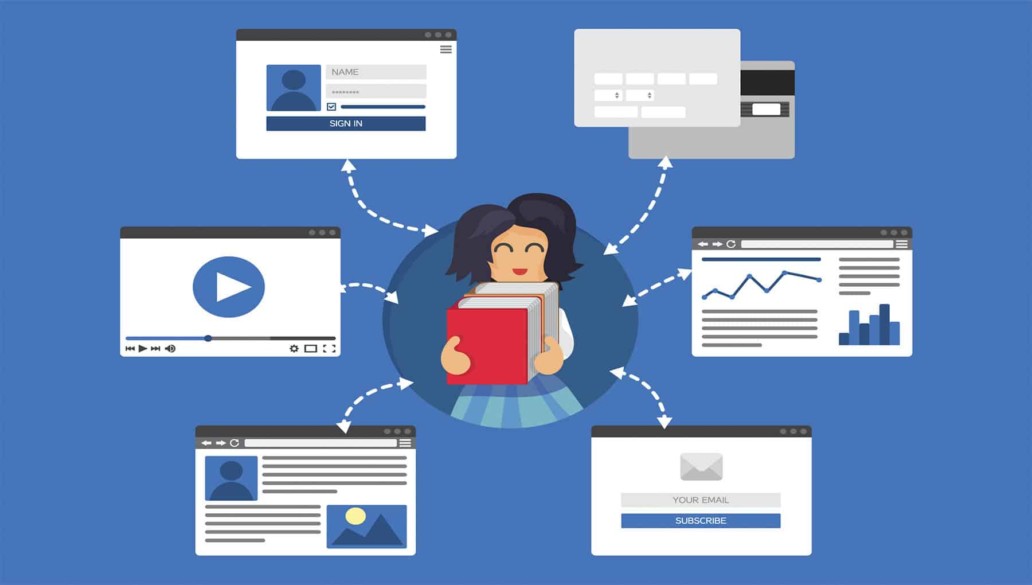When starting to think about planning your e-commerce marketing, you will need to consider all of the things this will require – SEO, analytics, strategies, social media, KPIs and end goals…
Without creating a plan for these tactics, you could be leaving room for failure when not considering what could impact the development of your plan. Considering your target audience, your overall business goals, and finding where your value proposition lies are key when planning your e-commerce marketing.
Taking it back to basics, creating an e-commerce marketing strategy doesn’t need to be a daunting task; it’s just a plan of action to achieve your end goals.
When getting started, there are three things to consider
- Situational analysis – Where are we now?
- Objectives – Where to we want to be?
- Strategy – How do we get there?
Undertaking any sort of business plan can’t be set into action without considering where you are currently – How are you measuring results accurately through analytics? What is each channel currently contributing? Who is your audience online, is it the same as offline? How do you compare to your competitors and what they’re doing online?
It’s much easier to develop your e-commerce marketing plan when you’re happy with your starting point – your website should be fully functioning, with a clear brand message. Get to know the channels you should be present on, based on who your audience is, and who your competition is and what they’re up to with their online marketing.
Once you have done the groundwork to figure out where you stand currently, you can make a start on considering where it is you want to get to. Think about: What is the breakdown of each forecast by channel and where you want to bring those to? What is the growth forecast based on improving your current customer retention and further e-commerce acquisition?
Bringing your targets and goals into a strategy makes more sense when you have a starting point and an end goal, so you’re left to fill in the middle ground to get where you need to.
Bringing this detail together to decide which marketing efforts to focus on is where it can seem to get tricky; but we’re talking about the basic tactics – how do we bring the marketing, communications and channels together with the tactical tools to make this work? There are so many options available to help grow your e-commerce sales, but the key is to know what’s working and focus on building these, rather than throwing money at every option and hoping one of them sticks.
If you’re just getting started with your e-commerce marketing, it’s advisable to start small, work out what’s working for your audience – is it social media targeting and retargeting, or does your audience engage with high quality blogs and useful info? Do you just need to get in front of your audience to show them what you’ve got, or does it need a more detailed sell?
Have a look at your current analytics, breaking it down to see when your revenue is coming from, what channels are working, even if this is offline – where are your customers coming from?
Having thought about who your target audience is during the situational analysis stage, working this out should be much easier, as you’ll have a greater understanding of who they are, and where they hang out online.
There are three key steps to think about when beginning the strategy stage
- Attracting your audience
- Planning the strategies to get their attention
- Segmenting your efforts
Taking it back to basics, you want to attract a potential customer to be convinced to purchase your product. Once they have converted, you then want to keep retention and make them want to come back.
Consider all the different ways you can get in front of your customer, is it email marketing, social media marketing, utilising influencers, PPC, SEO? When doing this, it’s important to keep in mind what your business objectives are – that is after all, the end goal. If your customer is aged 15-30, they’ll be on social media such as Instagram. Are they 40+? Consider a Facebook focus, product dependent of course.
Once you have the right tactics in place, you can start to segment your marketing campaigns to ensure you are getting true value from your efforts. Selling clothing? Who is your audience? Does every male customer want to receive emails about women’s dresses? Segmenting your audience via your marketing tactics can be very beneficial if you have a large product range, but also if you have a small range of products, with a loyal customer base who are interested in specific items.
As you move through reaching and missing your targets, you will be able to see what’s working for your business, make changes and adapt as you grow, a strategy shouldn’t be fixed, things can be changed as your business grows and you can see what channels and tactics are working for you.
A strategy should be a working document where you can learn from your efforts, and move to change as your audience does.
If you feel like you need a hand with planning your e-commerce marketing, or need a bit of advice, Venture Forge are a team of retail, digital and ecommerce experts here to help businesses grow quickly through empowered ownership, intelligent innovation and dynamic progress. Give us a call if you want to chat.

